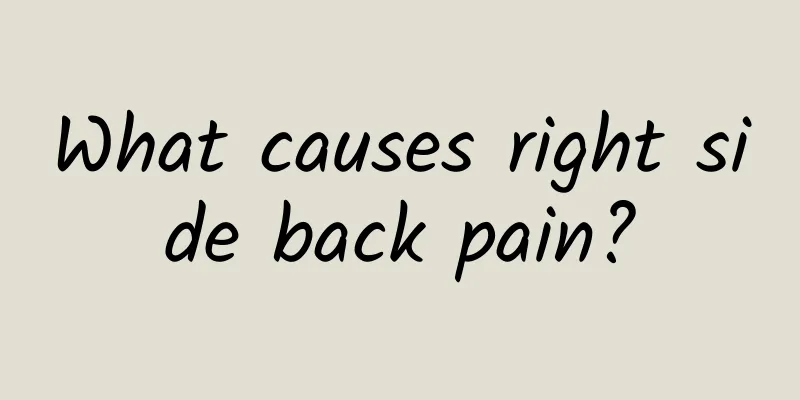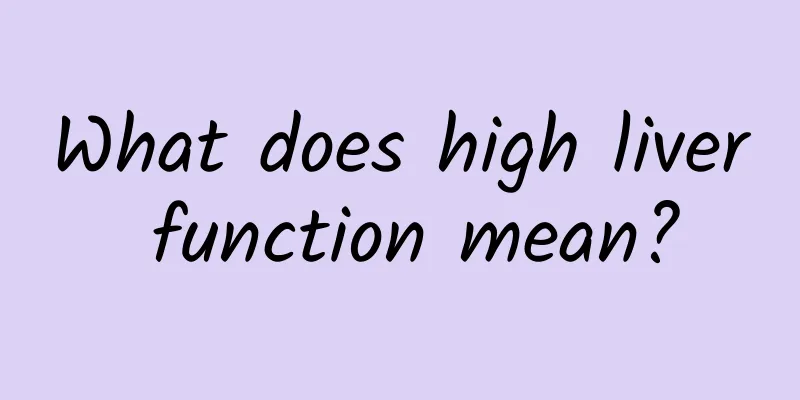Can cholecystitis cause hiccups?

|
If your body is attacked by cholecystitis, you must go to the gastroenterology department for diagnosis and treatment in time. The symptoms of cholecystitis are very prominent, generally manifested as chest pain, and it has a fatal blow to the digestive system. Many people experience nausea and vomiting, and in severe cases, jaundice will occur, which is not conducive to the normal development of the body, and may even lead to physical weakness and indigestion. So, can cholecystitis cause hiccups? 1. Acute cholecystitis The clinical manifestations of acute calculous cholecystitis are basically the same as those of acute acalculous cholecystitis. (1) Symptoms ① Pain: Severe pain or colic in the right upper abdomen is mostly caused by acute cholecystitis due to stones or parasites blocking the neck of the gallbladder. The pain often occurs suddenly and is very severe, or presents a colic-like state. It often occurs after eating high-fat foods and often occurs at night. General pain in the right upper abdomen is seen in acute cholecystitis without obstruction of the cystic duct. The pain in the right upper abdomen is generally not severe and is mostly persistent bloating. As the gallbladder inflammation progresses, the pain may also worsen. The pain is radiating, and the most common radiating sites are the right shoulder and the lower angle of the right scapula. It is caused by the stimulation of the right phrenic nerve endings and the peripheral nerves of the abdominal wall by gallbladder inflammation. ②Nausea and vomiting The most common symptoms include persistent or frequent nausea and vomiting, which can cause dehydration, collapse and electrolyte imbalance, and are more common when stones or ascaris block the gallbladder duct. ③ Chills, chills, and fever. Mild cases often have chills and low fever; severe cases may have chills and high fever, the temperature may reach above 39°C, and mental symptoms such as delirium and delirium may occur. ④ Jaundice is less common. If jaundice occurs, it is generally mild, indicating that the infection has spread to the liver through the lymphatic vessels, causing liver damage, or the inflammation has invaded the common bile duct. (2) Main signs Abdominal examination revealed tense abdominal muscles, tenderness, rebound tenderness, and positive Murphy's sign in the right upper abdomen and mid-upper abdomen. In patients with cholecystectomy or pericholecystic abscess, a tender mass or a significantly enlarged gallbladder may be felt in the right upper abdomen. When abdominal tenderness and abdominal muscle tension extend to other areas of the abdomen or the entire abdomen, it indicates gallbladder perforation. Or there is acute peritonitis. 15% to 20% of patients suffer from liver damage due to edema around the cystic duct, gallstone compression and pericholecystitis, or inflammation involving the common bile duct, causing spasm and edema of the sphincter of Oddi, leading to bile excretion obstruction and mild jaundice. If the jaundice becomes significantly worse, it may indicate common bile duct obstruction with stones or concurrent common bile duct inflammation. In severe cases, signs of peripheral circulatory failure may occur. Blood pressure is often low and even infectious shock may occur, which is particularly common in severe cases of purulent gangrene. 2. Chronic cholecystitis (1) Symptoms Persistent dull pain or discomfort in the right upper abdomen; symptoms of indigestion such as nausea, belching, acid reflux, abdominal distension and heartburn; pain in the right lower scapular area; symptoms worsen after eating high-fat or greasy food; long course of disease, with alternating acute attacks and remissions. Acute attacks are the same as symptoms of acute cholecystitis, and remission may sometimes be without any symptoms. (2) Physical signs There may be mild tenderness and percussion pain in the gallbladder area, but no rebound tenderness; in cases of cholestasis, an enlarged gallbladder may be palpated; in acute attacks, there may be muscle tension in the right upper abdomen, normal body temperature or low fever, and occasionally jaundice. The tenderness point of the gallbladder is at the intersection of the outer edge of the right rectus abdominis and the costal arch, the tenderness point of the thoracic spine is beside the 8th to 10th thoracic vertebrae, and the tenderness point of the right phrenic nerve is between the two lower corners of the sternocleidomastoid muscle on the right side of the neck. |
<<: What to do if your skin itches after eating lychees
>>: What department does cholecystitis belong to?
Recommend
What can you drink to treat stomach problems?
In modern society, the pace of life is so fast th...
Which groups of people are suitable for Fire Dragon Moxibustion to regulate their bodies?
What is Fire Dragon Moxibustion? I believe many p...
Chest tightness and rapid fetal heart rate
Pregnant women are in a special period. As the fe...
The correct way to fumigate a room with moxa sticks
The practice of fumigating rooms with moxa sticks...
How many days does it take for Haima Duobian Pills to be effective?
The Haima Duobian Pill for Qinggong Surgery is co...
Conservative treatment of renal rupture
The kidneys are the main organs that control a pe...
The effect of heat-clearing and blood-regulating soup, drinking these soups regularly can clear away heat and detoxify
Under normal circumstances, when people are maint...
What to do if you have bloating and constipation
Although constipation is a common and relatively ...
Home remedies for psoriasis
People have been asking about folk remedies for t...
Green stuff flowing from lower body
In addition to menstruation, women will also have...
How to kill insects after eating salmon?
Salmon is a very precious fish. People abroad are ...
How much do you know about pelvic effusion? What are the causes of pelvic effusion?
Pelvis effusion is a manifestation rather than a ...
Which is better, Chinese medicine or acupuncture?
Traditional Chinese medicine and acupuncture are ...
Will rubbing breast hyperplasia improve it?
Breast hyperplasia is relatively common in life. ...
Vas deferens blockage cured by Chinese medicine
For men, if the vas deferens is blocked, it often...









